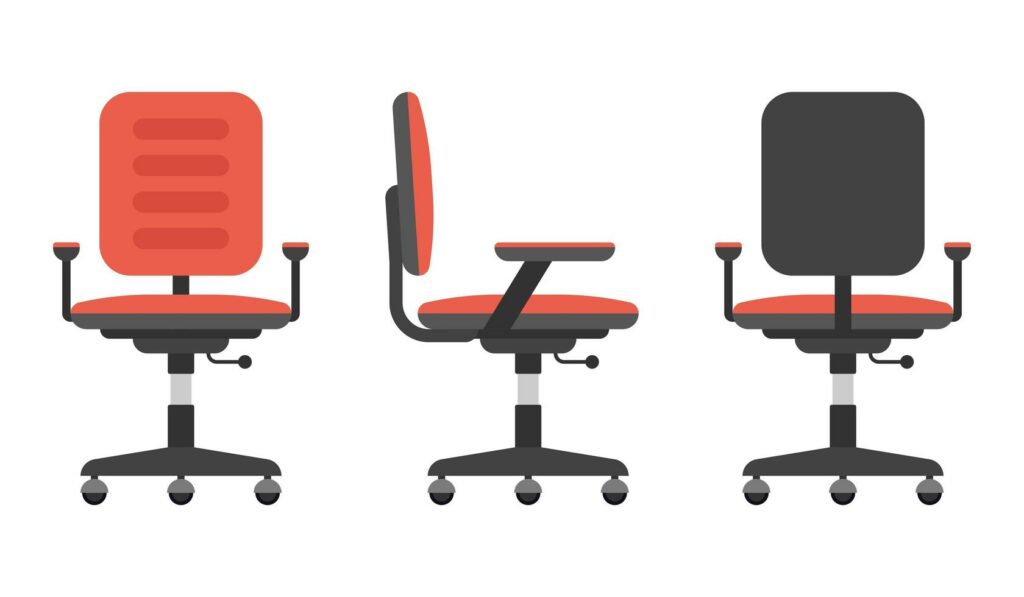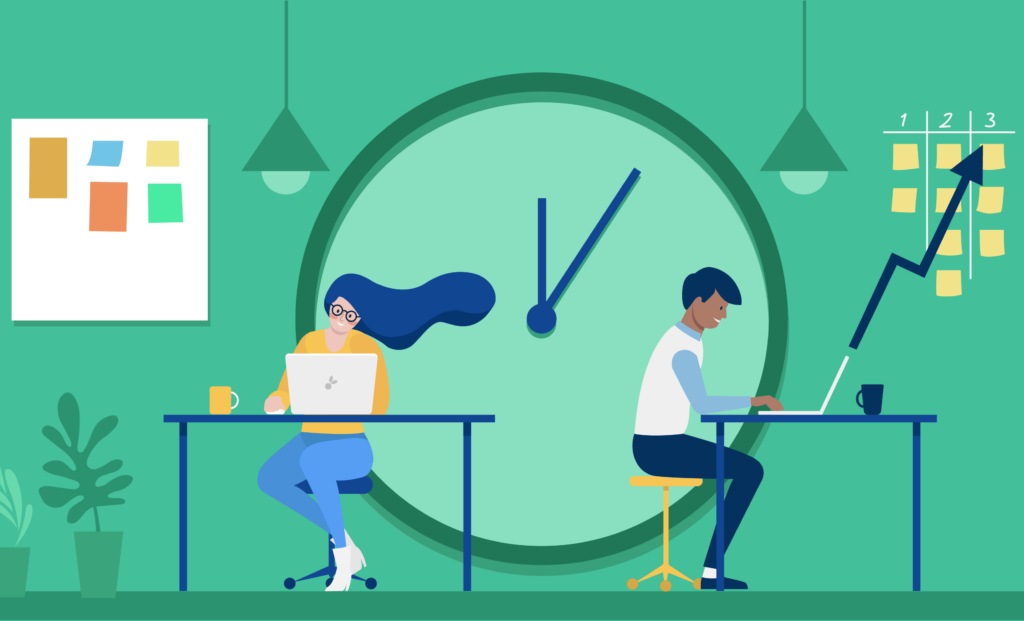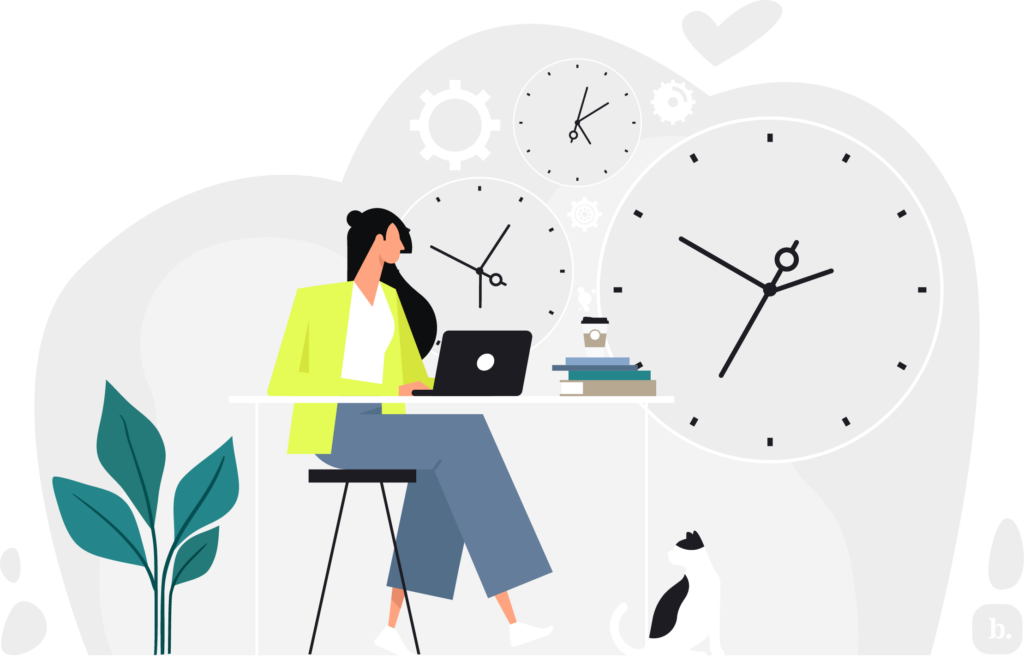Wherever we physically work today, regardless of if we work in an office, from home, or in a flexible remote work setting, understanding how to operate efficiently is important. However, often ignored is the most significant ingredient for such efficiency: the workplace itself. Many people do not realize how much workplace design influences work performance, creative output, one’s mood at work, etc.
This article outlines some basic office design guidance that can positively impact one’s productivity. Factors such as natural light, comfortable furniture, interesting design ideas, etc. will help you understand the relationship between your productivity and workspace. This article will provide you with some useful tips for designing a more productive office.
Table of Contents
Tip #1: Natural Lighting
Natural lighting is the foundational element of office design since it emphasizes natural light and has energy efficiency features. It helps improve mood and reduces eye strain, and this list only scratches the surface.
Benefits of Natural Light
Improves mood: Natural light increases serotonin levels in our brain, which helps produce the chemical that triggers feelings of happiness and general well-being and lessened feelings of hopelessness and anxiety.
Less vision straining: Sun rays produce full-spectrum light (all colors) and lessen headaches due to eye fatigue. Our eyes focus well on the sun’s rays when they are not too dependent on electric light.
Helps provide vitamin D: Vitamin D strengthens the bones and offers a stronger immune system. The sun that we see every day can save us from vitamin D deficiency and improve our overall health.
Practical tips
Use large glass windows. These allow for a large portion of the sun’s light. Place workspaces near windows to capitalize on the light.
Tip #2: Implement Ergonomic Furniture
Ergonomic furniture aims to help the body to maintain a neutral posture, minimizing the potential for discomfort and injury. Ergonomic design can improve employee health and productivity.
Benefits of Ergonomic Furniture
Reduces Physical Discomfort: Correct support reduces low back pain, neck pain and musculoskeletal pain.
Increases Focus: Being comfortable in a seat or workstation means employees can better focus on their tasks.
Enhances Employee Satisfaction: Ergonomic furniture is a commitment to the health of employees that in return boosts morale.

Practical Tip
Choose chairs with an adjustable height, lumbar support, and armrests. Use sit-stand desks so employees can switch back and forth between sitting and standing throughout the workday.
Tip #3: Strategic Office Arrangement
This layout of an office can significantly impact productivity. It helps create opportunities for collaborative work, reduces distractions, and ensures that opportunity organization is optimized.
Benefits of Strategic Arrangement
Facilitates collaboration: Open spaces and common areas encourage collaboration and communication. It promotes spontaneous conversations, interaction, and idea sharing.
Reduces distractions: Zoning effectively allows harder work zones where employees can focus on what is required and mitigate distractions.
Supports process: Departments and resources placed according to their logical position help with efficiency. Employees have better access to tools, teams, resources, etc., to streamline their processes and workflows.
Practical tip
Is there collaboration that is critical? If so, open floor plans are great! If deep work tasks are equally important, include private offices/quiet zones and space for spontaneous collaborative meetings.
Tip #4: Incorporate Plants and Greenery
Bringing nature into the workplace can be very impactful to productivity and quality of life. Plants that help clean air and reduce stress can make the workplace more enjoyable.
Benefits of Incorporating Plants and Greenery
Improve air quality: Plants filter pollutants and increase oxygen levels. This means a healthier workplace and cleaner air!
Reduce stress: Greenery has a calming effect/environment by reducing stress levels. It can also improve mood and promote overall well-being.
Bringing nature indoors is also a way to improve appeal/aesthetics: Plants are a welcome effect of nature to add a more inviting and attractive office. Well-decorated spaces improve the morale and satisfaction of employees.

Practical Tip
Putting small plants on desks is good for personalizing space and reducing stress. Use vertical gardens or plant walls to maximize space and plant life.
Tip #5: Personalize Workspace
Employee personalization of their workspace has a motivational and productive effect. Victims’ personal items and workspaces make the workplace feel safe and positive.
Benefits of Personalization
Increases comfort: Personal touches increase feelings of home and help employees feel relaxed. A relaxed and comfortable space can help reduce workplace stressors and allow employees to focus on the task at hand, dedicating time and effort to their overall well-being.
Increases morale: Personalization shows that the company values individuality and creativity as a component of their work environment. Eventually, increased morale will contribute to increased job satisfaction and team cohesion.
Increases creativity: Personal items can stimulate creativity and innovation. Customized and personalized environments allow for the creation of new ideas and solutions.
Practical Tips
Encourage staff to display their photos, plants, and other personal items. Allow them to personalize their individual workspace and their storage. Provide a variety of organizational tools and arrangements that can accommodate individual interests and needs.
Tip #6: Incorporate Modern Technology
The integration of modern technology may assist in streamlining workflows, enhancing communication, and limiting time spent on routine tasks.
Benefits of Technology
Streamlines workflows: Automating and digital tools replace many of the manual components of work, resulting in greater efficiency. Employees can concentrate on more strategic activities instead.
Improves communication: Collaboration tools (like Slack or Microsoft Teams) improve coordination and communication through real-time information sharing and teamwork.
Enhances remote work: Technology makes remote work and flexible schedules easier. Employees can remain connected and engaged no matter where they are.

Practical Tip
Provide tools (Slack, Microsoft Teams, Asana, etc.) to help manage projects and communication. When working remotely, use quality video-conferencing equipment. There is no need to provide the tools recommended, such as Slack.
Tip #7: Flexible Workspaces
The concept of flexible workspaces has gained significant attention in recent years. This approach to office design allows employees to select the most suitable environment for their specific tasks, whether it be a quiet area for concentrated work or an open space for collaborative efforts.
Benefits of Flexible Workspaces
Increased Productivity: By providing employees with the freedom to choose their work environment, organizations can facilitate more efficient and effective task completion. This adaptability enables staff to optimize their surroundings based on the nature of their work.
Enhanced Collaboration: The design of flexible spaces naturally encourages impromptu meetings and teamwork. These areas provide employees with the opportunity to engage in creative discussions and collaborative projects without the constraints of traditional office layouts.
Improved Job Satisfaction: The autonomy afforded by flexible workspaces can contribute to higher levels of job satisfaction among employees. This increased contentment often leads to a more positive overall work culture within the organization.
Practical Tips
Introduce hot desk policies that allow employees to select their work location on a daily basis. Create diverse work environments, including quiet zones, collaborative spaces, and relaxation areas.
Tip #8: Inclusive and Diverse Design
An inclusive and diverse workspace design ensures that all individuals are valued and accommodated, regardless of their background or ability.
Benefits of Inclusive Design
Promotes equality: Ensures that all employees have equal access to facilities and opportunities. This fosters a fair and respectful workplace.
Increased innovation: Diverse perspectives increase the chances of innovation and more innovative solutions. A variety of viewpoints might push creative problem-solving and decision-making.
Increased employee satisfaction: Incorporating a diverse work environment will bring about an increased sense of belonging and more respect among workers. Valued employees are more likely to be engaged and committed to their work.

Practical Tips
Enable all employees with disabilities to access the workspace. This includes accessible ramps, elevators, and accessible restrooms. Office décor and artwork should reflect the diverse cultures and backgrounds present at work. Implement policies that foster diversity and inclusion.
Optimize Office Design for Maximum Productivity
A well-designed office plays a crucial role in enhancing productivity, employee well-being, and overall workplace satisfaction. By integrating natural lighting, ergonomic furniture, flexible workspaces, and inclusive design, companies can create an environment that fosters collaboration, reduces stress, and supports diverse needs.
For more office design tips and strategies, follow the EvolveDash blog and transform your workspace today! Stay updated with expert insights to create a productive and inspiring environment for your team.
FAQs
- How can color psychology help with office design and productivity?
Color can impact mood and productivity in the office. For example, blue induces calmness and focus, while green stimulates creativity. Selecting the right colors can create a positive workspace.
- What are the advantages of a break room in an office?
Break rooms allow employees to recharge, relax, and socialize as a group. This decreases stress and encourages overall productivity because employees have the time to reset between activities.
- How can sound levels affect productivity in offices?
Too much noise can equal too many distractions and loss of focus. Soundproof partitions, sound-related panels, and designated good noise amounts can amplify productivity.
- What are the best ways to incorporate AI/smart technology into office spaces?
Smart lights, temperature controls, automated scheduling for meeting rooms, and other automated systems can increase comfort, decrease energy consumption, and improve operations.



















